How much does it cost to bulletproo...
Please enable JavaScript
How much does it cost to bulletproof a car?
This article has been proofread and quality checked and follows our editorial guidelines.
For those of you who are avid Formula One fans, you’ll know that the tyres are a very important part of the car.
They play a significant role in how the car behaves on track, and as such, teams go to great lengths to find the best tyre compound for each race.
But just how expensive are F1 tyres? And what makes them so different from regular car tyres?
In this blog post, we’ll take a closer look at F1 tyres and discuss some of the factors that affect their cost. Stay tuned!
Watch this video to learn more about how F1 tyres are made and how much they cost to produce.
A single set of F1 tyres cost up to $2700. Since each team needs 13 sets of tyres per race, the total cost of tyres for a single driver can reach $35,100.
With 21 races per season that takes your team’s budget up over 5 million dollars if they all use just 1 set each (on average).
And that’s not even taking into account the cost of shipping and storing the tyres.
Here are some key aspects that you should know about the cost of F1 tyres:
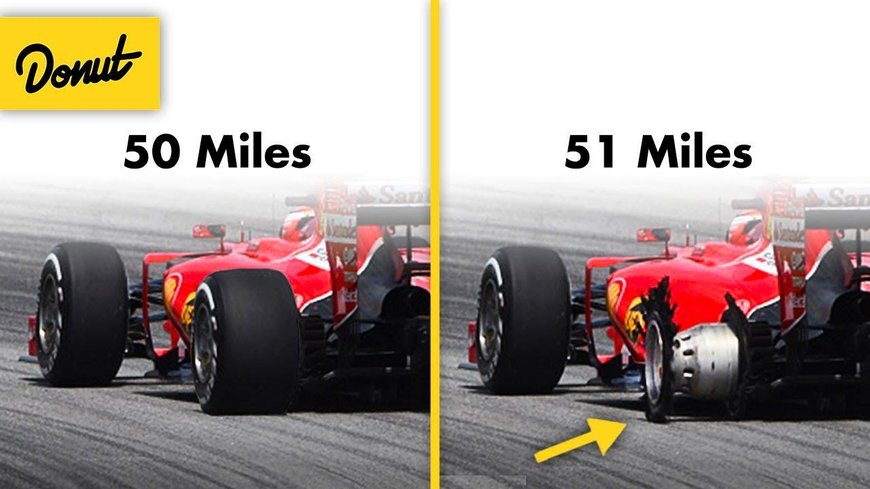
Now that we have a good idea of how much F1 tyres cost, you might be wondering why they’re so expensive. Let’s take a look at some of the reasons why F1 tyres cost so much.
TechnologyF1 tyres are made with the latest and greatest in tyre technology. They are designed specifically for high speed racing and feature a tread pattern that optimizes grip, stability, and cornering performance.
MaterialsThe materials used to make F1 tyres have to be of the highest quality, as any imperfection can cause major problems on the track. The tyres are made with a mix of organic and synthetic rubber, metal cords, and different types of rubber compounds.
Manufacturing ProcessManufacturing F1 tyres is an intricate process that requires highly skilled technicians to ensure each tyre meets exact specifications. This level of precision adds significantly to the cost of producing F1 tyres.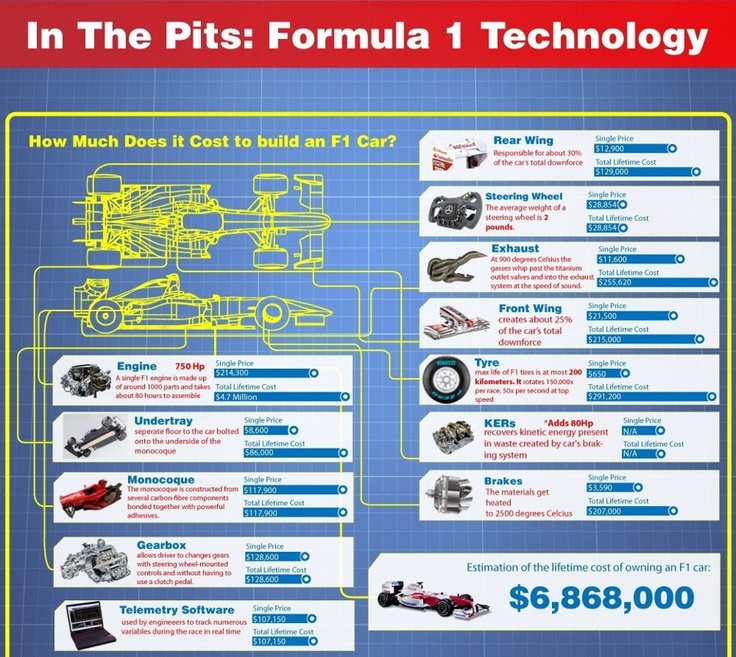
F1 tyre manufacturers are constantly developing new and improved tyres to keep up with the rapidly changing conditions on the track. This cycle of development and testing takes a lot of time and money, which is reflected in the overall cost of F1 tyres.
Recommended reading: Are Formula 1 cars AWD?
F1 tyre manufacturers are constantly developing new and improved tyres to keep up with the rapidly changing conditions on the track.
This cycle of development and testing takes a lot of time and money, which is reflected in the overall cost of F1 tyres.
Currently, Pirelli is the official supplier of tyres to F1 cars. Their tyres feature a unique tread pattern and compound that offers superior performance on track.
Pirelli has been supplying tyres to F1 teams since 2011, and their partnership with the sport continues to this day. The contract is expected to last until at least 2024.
The contract is expected to last until at least 2024.
The main reason why Pirelli is the official supplier of tyres to F1 cars is because they are able to meet the strict performance needs of teams and drivers.
In addition, their innovative tyre technologies keep them ahead of the competition, which helps ensure that F1 teams always have access to the latest in tyre technology.
It’s counterparts Bridgestone was the official tyre supplier for F1 cars from 1997 to 2010. Pirelli took over the role in 2011 as part of its commitment to providing F1 teams with the best in tyre technologies and performance.
Yes, new Formula 1 tyres are considerably more expensive than the previous models. This is due to a variety of reasons, including:
As we’re sure you can appreciate, these technologies and processes come with a hefty price tag. However, the performance gains they bring to the table make them worth every penny.
However, the performance gains they bring to the table make them worth every penny.
Since, F1 is an intense and high-stakes environment, every team needs to have access to the best and most cutting edge performance components in order to succeed.
A part of why Formula 1 tyres are so expensive is because they provide an extra layer of safety for the drivers. Good tyres lower the risk and chance of any accidents or mishaps that might occur during the race.
The higher cost associated with F1 tyres is partly due to them being designed with improved traction, grip, braking power, and stability on track.
FIA has made it mandatory for all F1 teams to use the latest technology when it comes to tyres.
This helps ensure that all drivers have an equal chance of winning the race, thus providing a safe and fair environment for everyone.
So, how much do F1 tyres cost?
It’s hard to put an exact figure on the overall cost of F1 tyres, but we can confidently say that they are considerably more expensive than regular car tyres.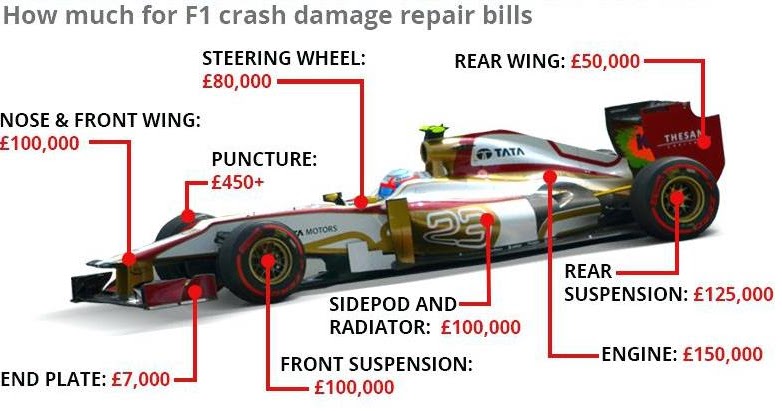
This is due to the advanced technologies used in their manufacture and construction, as well as the safety features they provide for drivers during races.
However, the performance gains they bring to the table make them well worth the investment.
Next time you watch an F1 race, take a minute to appreciate the complex engineering and high-performance technology behind these incredibly expensive tyres. It really is quite something!
A lot of money goes into creating a single Formula 1 car. A piece that might be a fraction of the total might go through changes to make it safer after one season, increasing the price for the following season. Generally, most of the cash is spent on the engine.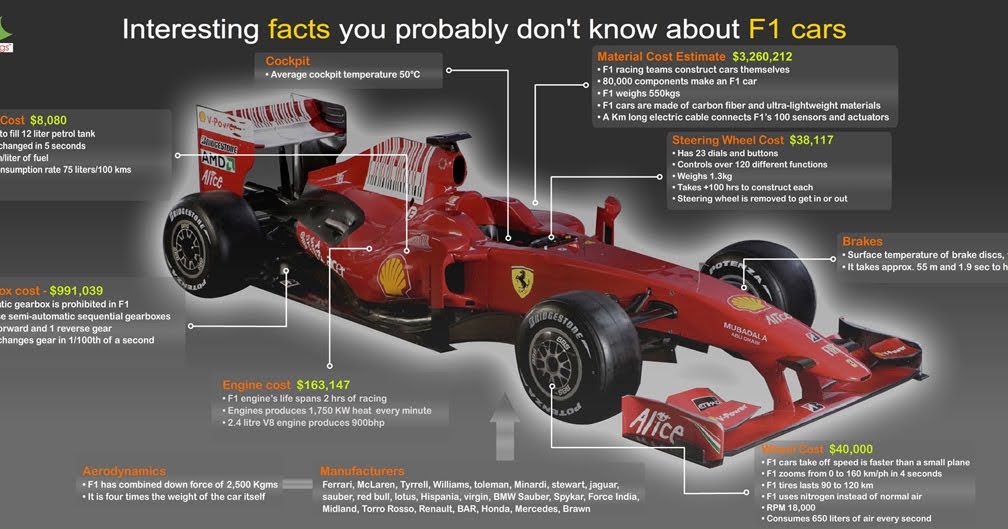
After all, going fast is the most important part of racing. Or is it?
https://twitter.com/LewisHamilton/status/1366718077237407744
The Sports Rush crafted a list of how much each piece of the car costs. It probably comes as no surprise that the engine came in at the most expensive. The estimate was $10.5 million, but that could certainly fluctuate across teams.
The front and rear wings cost over an estimated $400,000-$450,000. The front wing is the biggest chunk of that, anywhere from $200,000 and up. Red Bull Racing recently revamped the nose of the 2021 RB16B car. This small change likely cost hundreds of thousands of dollars in design changes.
The fuel tank is somewhere around $140,000. That doesn’t include all of the fuel used throughout the season. That can tack on an extra $500,000 depending on how many races the car runs in.
The gearbox costs anywhere from $400,000 to $600,000. The steering wheel is another $50,000 to $70,000.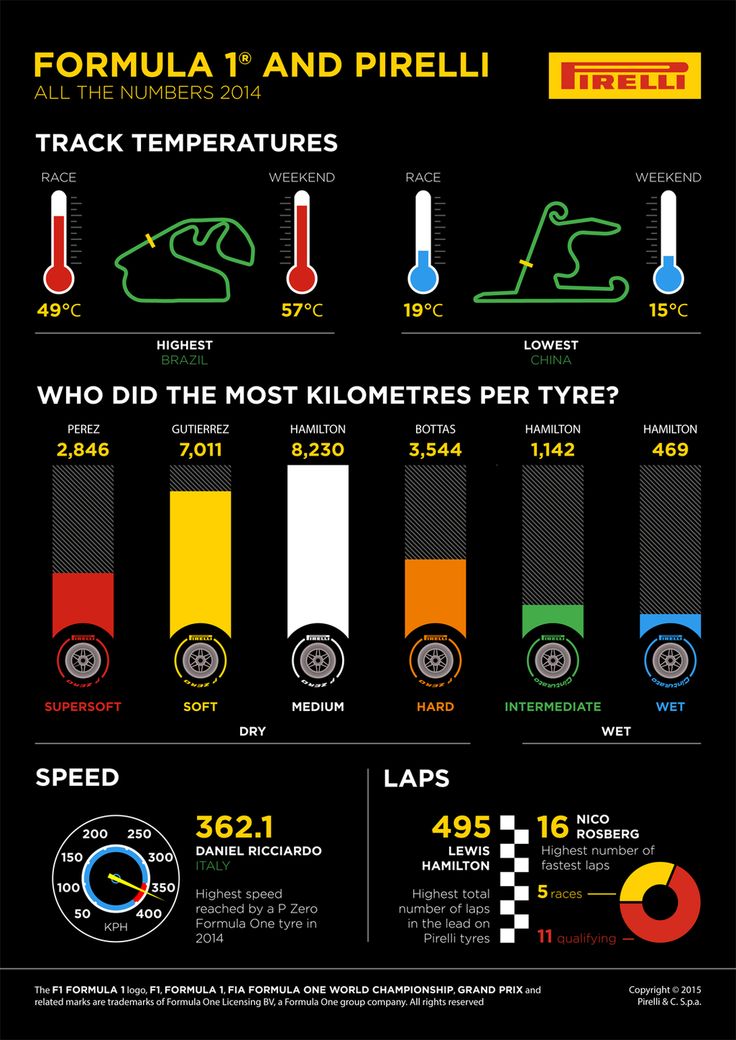 And then, of course, there is accident repair. This can cost anywhere from $500,000 and up, depending on the accident.
And then, of course, there is accident repair. This can cost anywhere from $500,000 and up, depending on the accident.
Once skeptical of the halo safety device on Formula One cars, driver Romain Grosjean acknowledged it likely saved his life after his car was split in half and engulfed in flames in a horrific crash at the Bahrain Grand Prix. https://t.co/SoNdNDbQyD
— CNN (@CNN) November 30, 2020
Each year, the cars change to become faster and safer for the drivers. With this comes a change to how much things might cost. One such feature is the halo device.
The halo, which is arguably the second most important piece after the engine, costs around $20,000. This is the piece that protects the driver’s head in case of a crash or flying debris.
During the 2020 season, Haas driver Romain Grosjean was involved in a horrific crash at the Bahrain Grand Prix.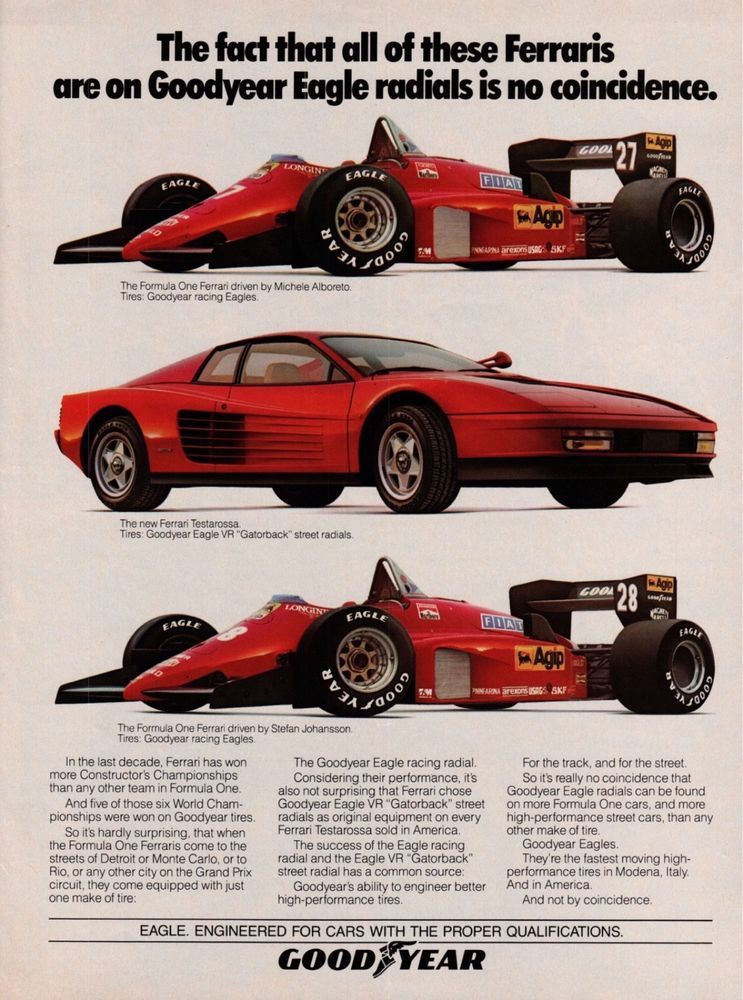 During the race, Grosjean’s car split in two and caught fire as it hit the guardrail. Grosjean credits the halo with saving his life.
During the race, Grosjean’s car split in two and caught fire as it hit the guardrail. Grosjean credits the halo with saving his life.
With that perspective, a halo is an invaluable tool in the Formula 1 arsenal.
Formula 1 selects three sets of slicks from a bank of five different compounds for each race. https://t.co/VEGuU2HBap
— Autoweek (@AutoweekUSA) February 25, 2021
Related
Tires cost around $3,000. During a single race, a team can go through many sets of tires, depending on conditions. Dry tires, wet tires, and intermediate tires are always on standby for various weather conditions.
Each time a car enters the pit lane, the team switches the tires. Sometimes, fresh tires can help win a race. Other times, the time spent in the pit lane can help lose a race.
Last season, the Mercedes AMG Petronas F1 Team cost George Russell a spectacular win when the Mercedes team put a compromised tire on his car.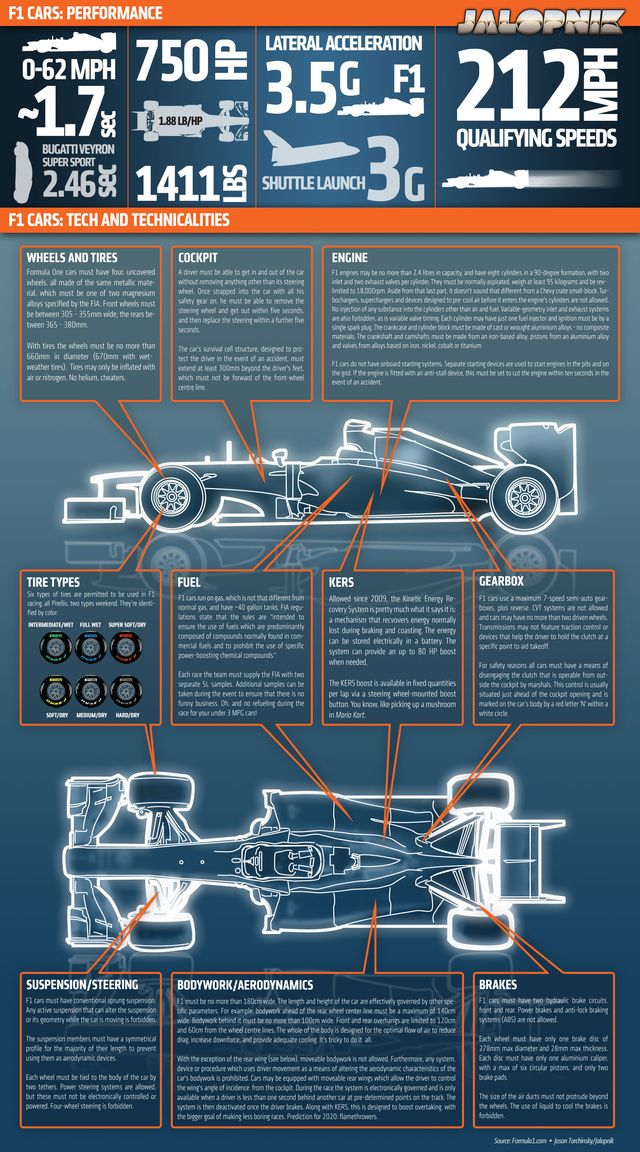 Ideally, that does not happen. When you break it down this way, tires can be one of the more expensive pieces on a Formula 1 car if it costs you a race.
Ideally, that does not happen. When you break it down this way, tires can be one of the more expensive pieces on a Formula 1 car if it costs you a race.
Overall, many variables make up the cost of a Formula 1 car. It depends on the team, the driver, the weather, and even the track to determine exactly how much a car might cost.
But just because the engine costs millions of dollars doesn’t mean it is the most expensive piece of the puzzle. You can replace an engine, but you cannot replace a driver.
Click to download audio player
How much do you know about Formula 1 cars? Yes, they are fast and powerful vehicles. But what exactly is under the hood of such a machine? And how much time and money will it take to create at least one truly real car? We invite you to familiarize yourself with the specific details.
Monocoque:
A Formula 1 car is identified by the monocoque number, since all other components and assemblies on it are removable and replaceable.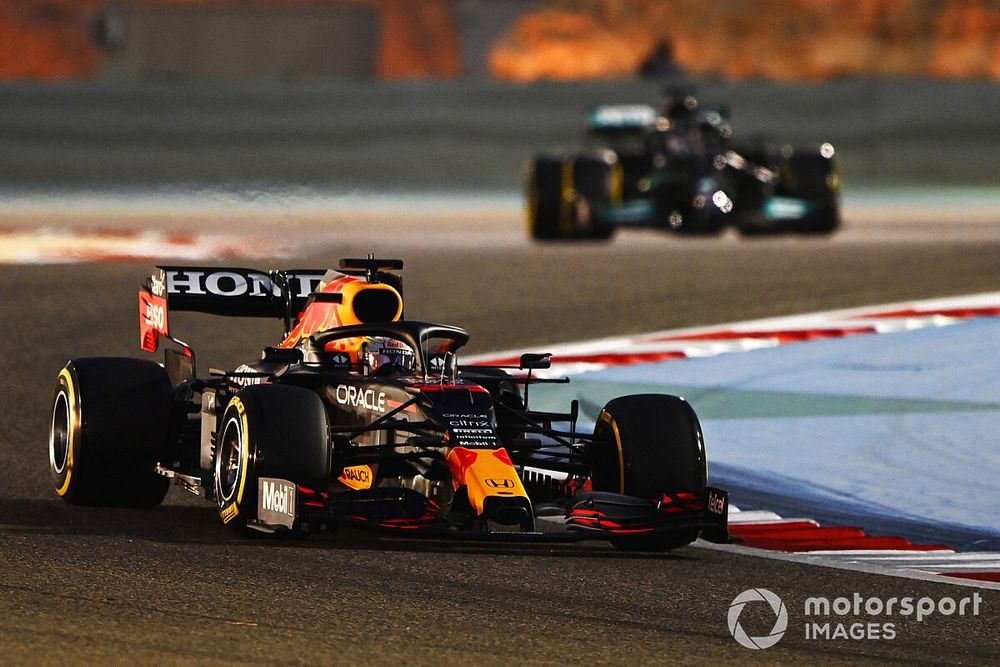 During the season, the rider changes an average of three monocoques worth about $115,000 each. In total, for the season, only for monocoques for one pilot, teams should lay about 350,000 $.
During the season, the rider changes an average of three monocoques worth about $115,000 each. In total, for the season, only for monocoques for one pilot, teams should lay about 350,000 $.
Average cabin temperature 50 °C
Engine :
Motor cost - 163 148 $
Mileage at least 1000 km. to bulkhead
Engine life - 1600-2000 km
Every minute the engine releases energy in the amount of 1750 kW
V8 engine with a volume of 2.4 liters
Develops over 19,000 rpm. Average power is about 850 hp.
Cost of engines for the season - 2,000,000 $
Gearbox :
Formula 1 cars do not use automatic transmissions
Semi-automatic sequential transmissions are used
There are 7 forward and 1 reverse gears
The pilot shifts gears in 1/100 of a second
The cost of one seven-speed semi-automatic transmission is over $130,000. Designed for a mileage of 6000 km. 10 boxes are enough for a season, including tests. The kit includes several sets of gears.
Cost of boxes for the season - 1 300 000 $
Materials :
Cost of materials - 3 260 211 $
Bolid consists of 80,000 components of
Carbon
Carbon and excess of light materials
Fuel BAC 9000:
are made from rubberized fabric reinforced with kevlar
12 liter tank fills in 1 second
Fuel consumption - 75 l / 100 km
Has a volume of over 200 liters.
20,000 $
Wheels:
Cost of wheels - 40 010 $
40 sets of rims are required for the season
Front rims (without tires) weigh about 4 kg, rear rims - 4.5 kg.
Wheel Nut :
Aluminium, $110 each, about 500 per season required.
55,000 $
Disc brakes :
Each assembly includes: caliper, discs and pads. The cost of such a node is $6000. During the season, 180 such knots are required.
The temperature on the surface of the brake discs reaches 1000 °C
At a speed of 100 km / h, it takes 1.4 seconds and 17 meters to completely stop the car
1,050,000 $
Front suspension arms :
Made of titanium and carbon fiber . For the season, 20 sets of $100,000 each are required.
2,000,000 $
Pilot's seat :
Made to measure in carbon fiber. In case of an accident, it can be removed from the cockpit along with the pilot.
2000 $
Steering wheel :
Up to 8 pieces are used per season, costing $40,000 each. On the steering wheel there are gear shift keys, as well as other control and monitoring systems necessary for the pilot, on-board radio communication buttons and others.
Has 23 buttons
Controls over 120 different functions
Weighs 1.3 kg
Requires 100 hours of assembly per handlebar.
The steering wheel is removed when the pilot gets in and out of the car
320,000 $
Built-in video camera :
The camera is mounted in a carbon fiber protective housing. All costs are borne by the administration of Bernie Ecclestone, which owns this equipment.
140,000 $
Exhaust System :
Each car is supplied with two steel exhaust systems at $13,000 per HP. Replacing the exhaust system of different configurations is an element of reconfiguring the car. 54 sets are needed for the season.
700,000 $
Rear wing :
Manufactured from carbon fibre. About 15 such knots are consumed per season. The cost of each is $20,000.
300,000 $
Nose fairing :
Nose fairing complete with front wing. Cost approximately $19,000 each. Up to 10 sets are usually consumed per season.
190,000 $
Tires :
The cost of one tire is about $ 800, 10 sets per car are needed for each race, in total 760 pieces per season.
Tire life 90 to 200 km depending on compound
Nitrogen instead of air
Tire change in 3 seconds
608,000 $
They are mounted in a carbon fiber body, so they are relatively inexpensive, but thousands of dollars are spent on their aerodynamic fine-tuning.
1200 $
Radiators :
One new set of aluminum radiators installed per race. The cost of each is 11,000. In total, about 20 sets are required.
220,000 $
Rear Suspension Arms :
Made of titanium and carbon fiber, each set costs $120,000. 20 such sets are consumed per season.
2,400,000 $
Electronics and electrical equipment :
Electric cable, 1 km long, connects 100 sensors and transducers
All electronic systems of the car.
4,000,000 $
Bottom :
Manufactured from carbon fibre, however the technical regulations also require a pressed wood sliding board under the bottom. Each GP uses several bottoms with different placement of ballast in them.
30,000 $
Aerodynamics :
A Formula 1 car has a downforce of 2500 kg
That's 4 times the weight of the car itself
Acceleration to 100 km/h - Depends on the setting of the car itself, the surface of the track and weather conditions. But most Formula 1 cars are able to accelerate to 100 km / h in 1.9 seconds !!! This is the fastest indicator for cars on mechanical traction. To achieve more acceleration, you will have to use jet propulsion
The maximum speed is 340 km/h
The approximate cost of all costs for cars alone is: 15 million dollars .....
Editor's Note: You are in the new Formula 1 Main Tribune blog. Exclusive interviews with former and current residents of the Formula 1 paddock are published here - you will not see such information in Russian anywhere else. Support the author with subscriptions and pluses!
The head of the Pirelli racing division, Mario Isola, spoke about working as a Milan ambulance driver, a career in a tire company and the features of tires in Formula 1.
I started when I was 18, that is 32 years ago. To work in Italy in an ambulance, you need to take courses, pass several exams. I went through all the trainings and now I work with other guys: I myself conduct trainings for ambulance drivers in Lombardy. My night shift usually starts at 7pm, on weekdays at 5am, and on weekends at 7am. There are 150 volunteers in my association. We work weekly. But now, of course, more because of the situation in Milan. I usually work once a week, sometimes a little more.
It's not about softness and hardness of rubber. This does not affect the final number of pit stops. Over the past few years, we have opted for softer tires, and the teams have moved to control the pace of the rider instead of increasing the number of pit stops in strategies. They simply ask the rider to slow down so that the tires last longer - this reduces the number of stops. Because when you go into the pits, you face the possibility of making a mistake during the pit stop. There is a risk of getting into traffic, which makes it more difficult to overtake, for example. So not only the softness of the rubber determines the number of pit stops in the race.
We also have to pay close attention to the softness of the tires: if you go too far, the driver will drive too slowly to stay on a strategy of one pit stop at any cost. So finding a way out of this situation is not very easy.
During pre-season testing in Barcelona, Mercedes used the DAS for many days. We analyzed all their tires, as well as the tires of the rest of the competitors, and did not find anything that would affect the rubber. Perhaps the Mercedes system reduces tire wear, but it certainly does not increase it.
Each team has one of our engineers. They cooperate with the team for two years, and then there is a rotation to avoid rapprochement. Because we have an obligation not only to provide everyone with the same product, but also the same service - and this is very important.
These engineers collect information about tire usage, laps, temperature and pressure. There is a whole list of data about the tires that were driven on the race weekend.
We have already begun development of 18-inch wheels, but their introduction has been delayed until 2022. We had the first tests in September last year with the Renault team at Paul Ricard, then we tested there with McLaren, and then with Mercedes in Abu Dhabi. This year we had only one test - in Jerez with Ferrari - but I can say that now we have a common understanding of where to start development. The main thing is the composition and profile.
After the races in Jerez, we froze the development of 18-inch wheels - we will continue next year. So far, there is no new test plan for this year due to the current situation with the virus.
At the moment and in the next few years, Formula 1 will retain thermal covers. In them, the rear tires are heated to a temperature of about 80 degrees Celsius, and the front tires up to 100 degrees. The temperature in motion does not differ much from these values.
During the race, the temperature fluctuates between 100 and 120 degrees. And, of course, the indicators differ depending on the composition - each has its own operating temperature. It is also the window of the maximum hold, the peak of adhesion. You can often hear teams talk about working range. The window from peak to traction loss of 3 percent is very roughly 30 degrees. This is the main problem. Because in fact, the goal of teams is to stay at the peak of adhesion. Because piloting at three percent grip outside of operating temperature costs a second per lap. The window that the teams are looking for is much, much narrower than the very three percent that is taken as an example.
When you put a Formula 1 tire on a road car... The first problem is when the tire is cold the grip is very low. Second, if you can't make a tire work, it will slip, but it will live forever. The technologies that we develop for F1 are used in road tires because we study all kinds of materials a lot. We make virtual models, we study the production process.
It is clear that developments for Formula 1 are for Formula, and tires for ordinary cars are for ordinary roads. Different goals. In road cars, you think more about noise levels, about hydroplaning - there are many other elements that you don’t think about when you design F-1 tires.